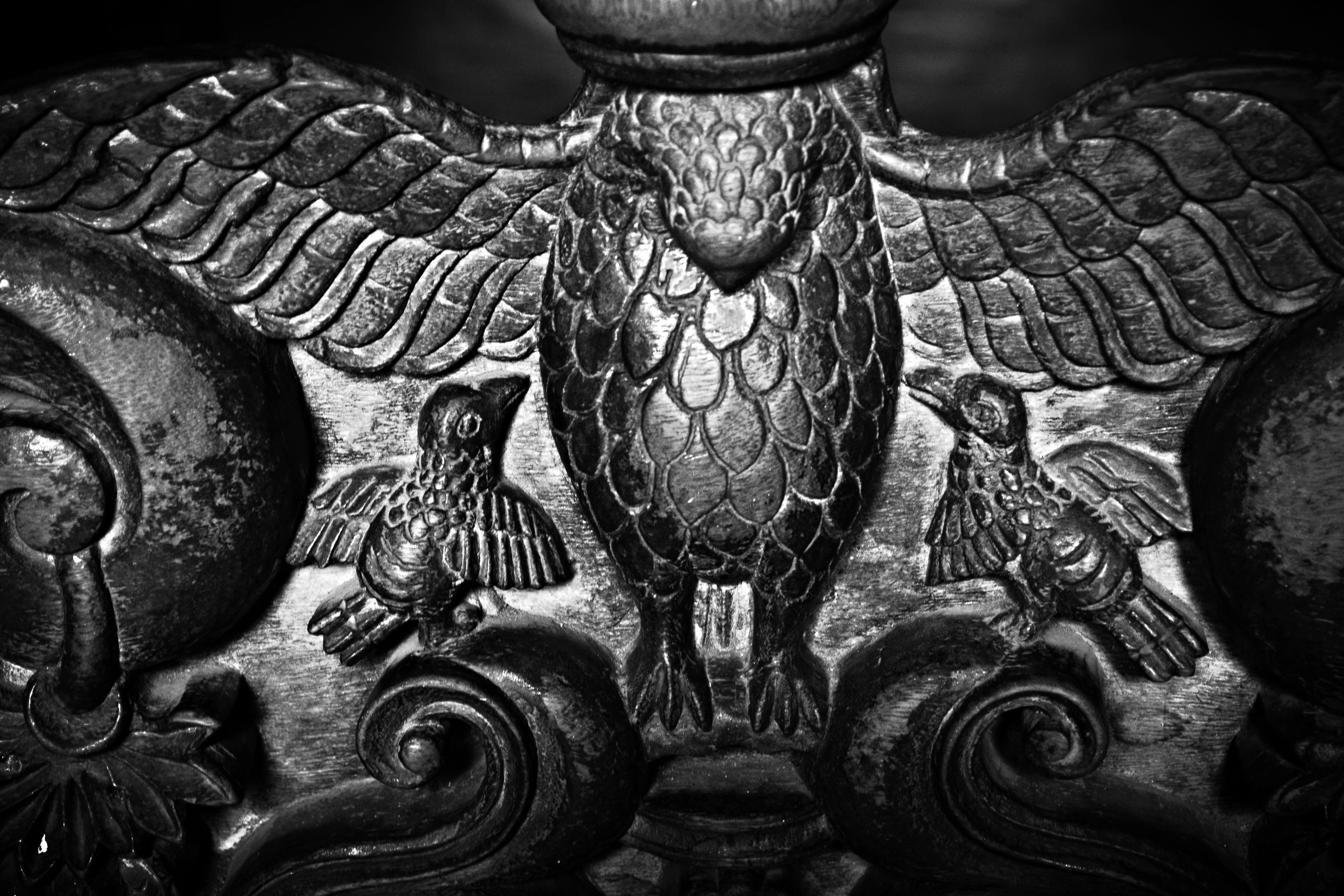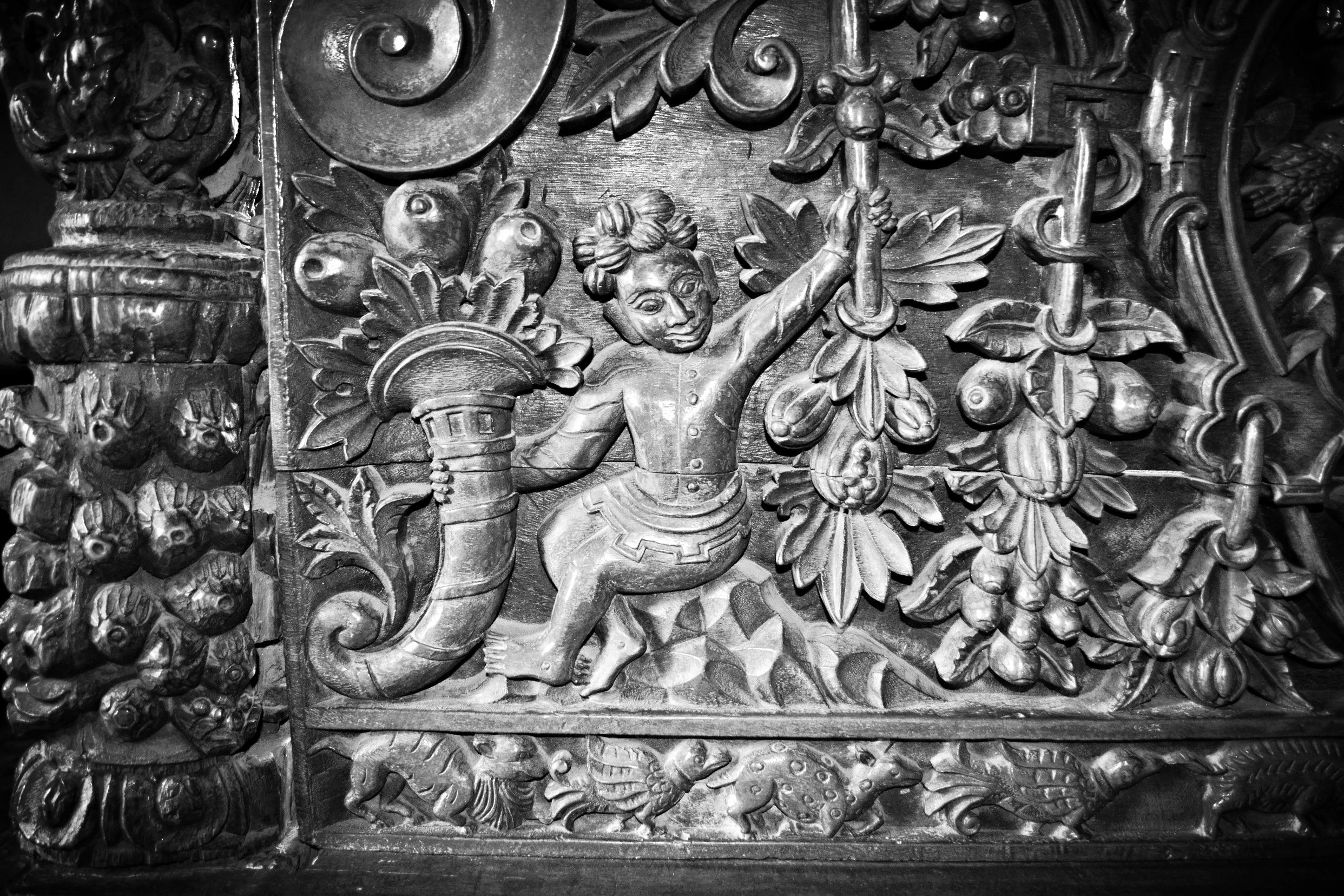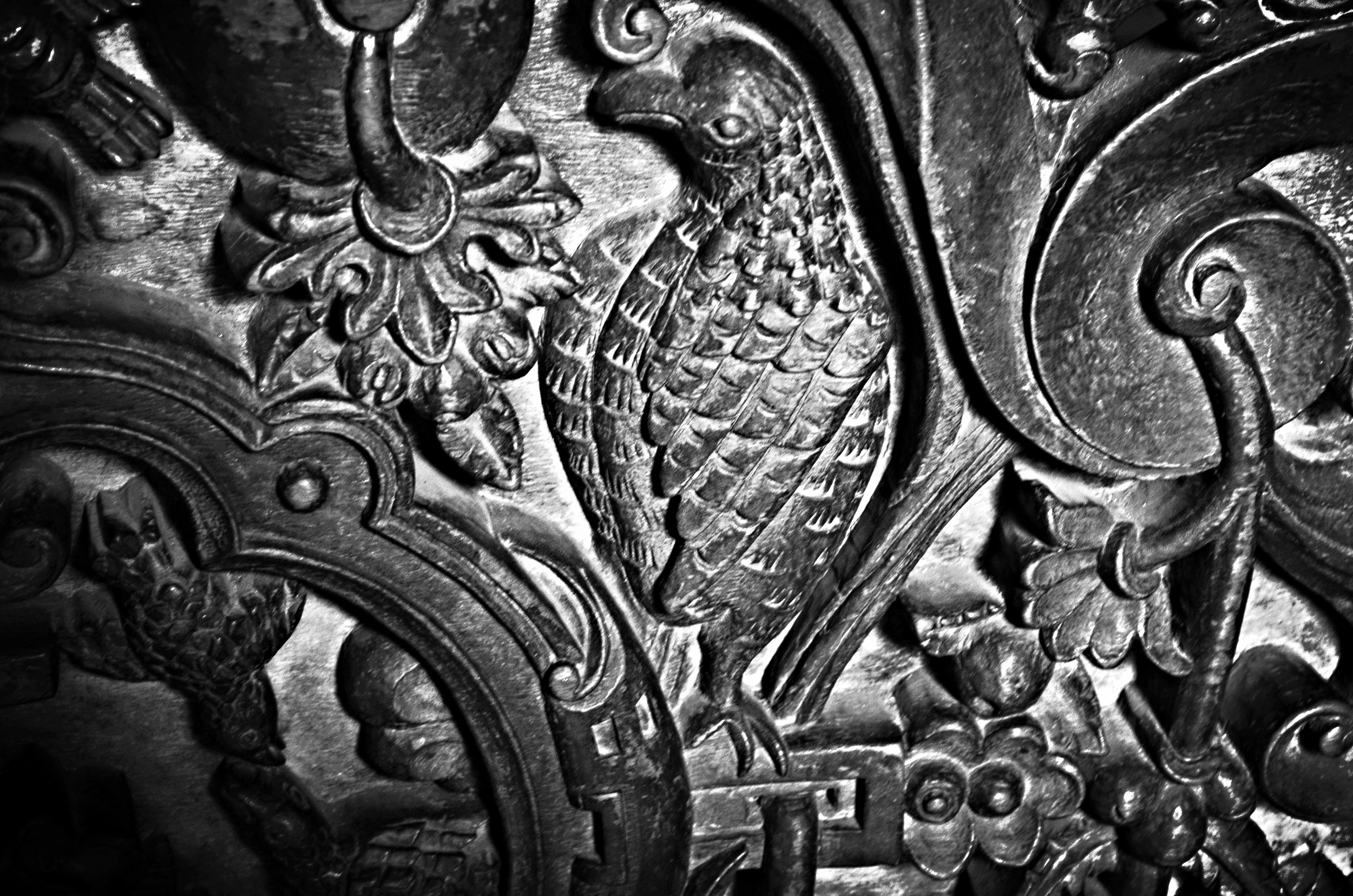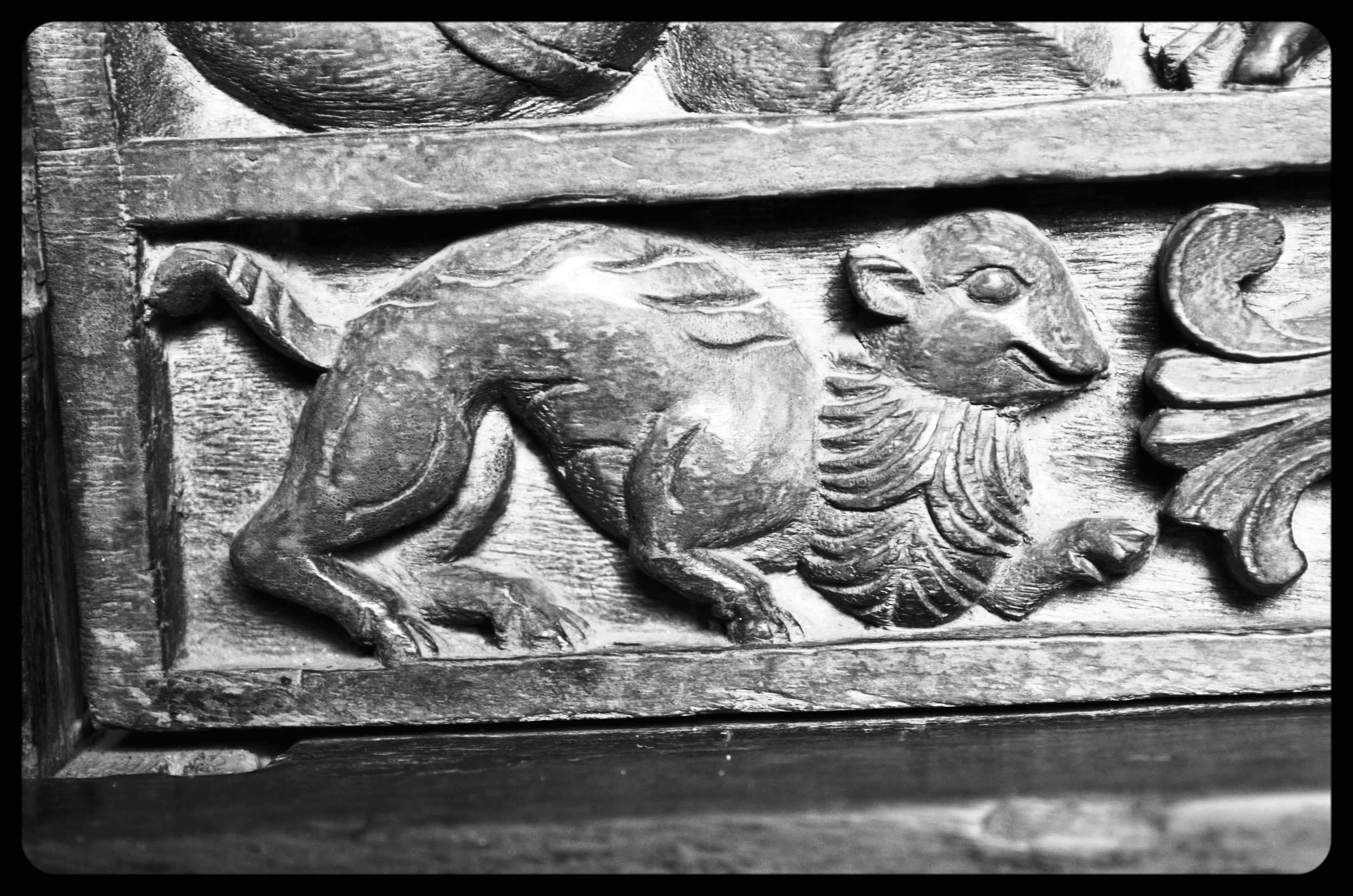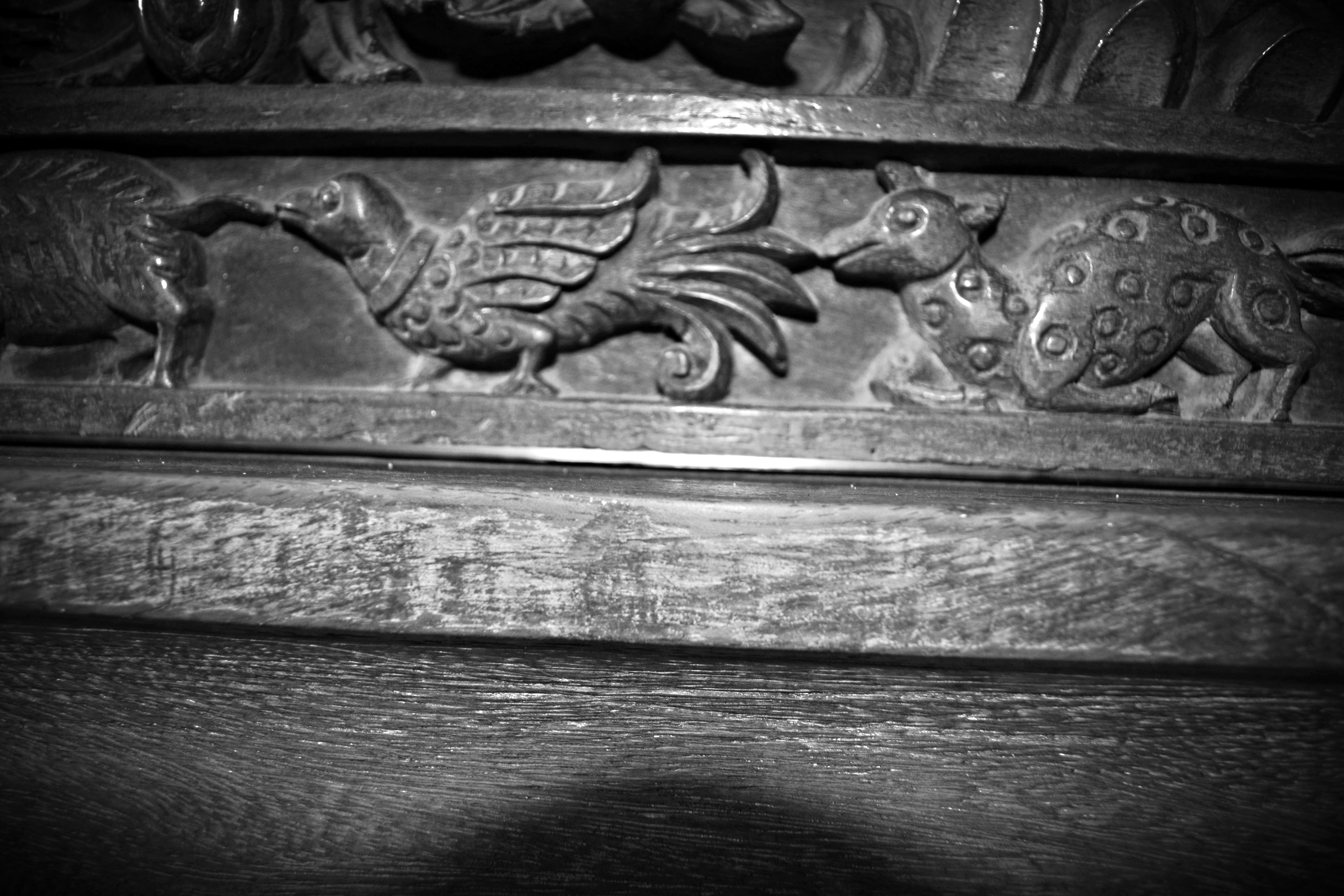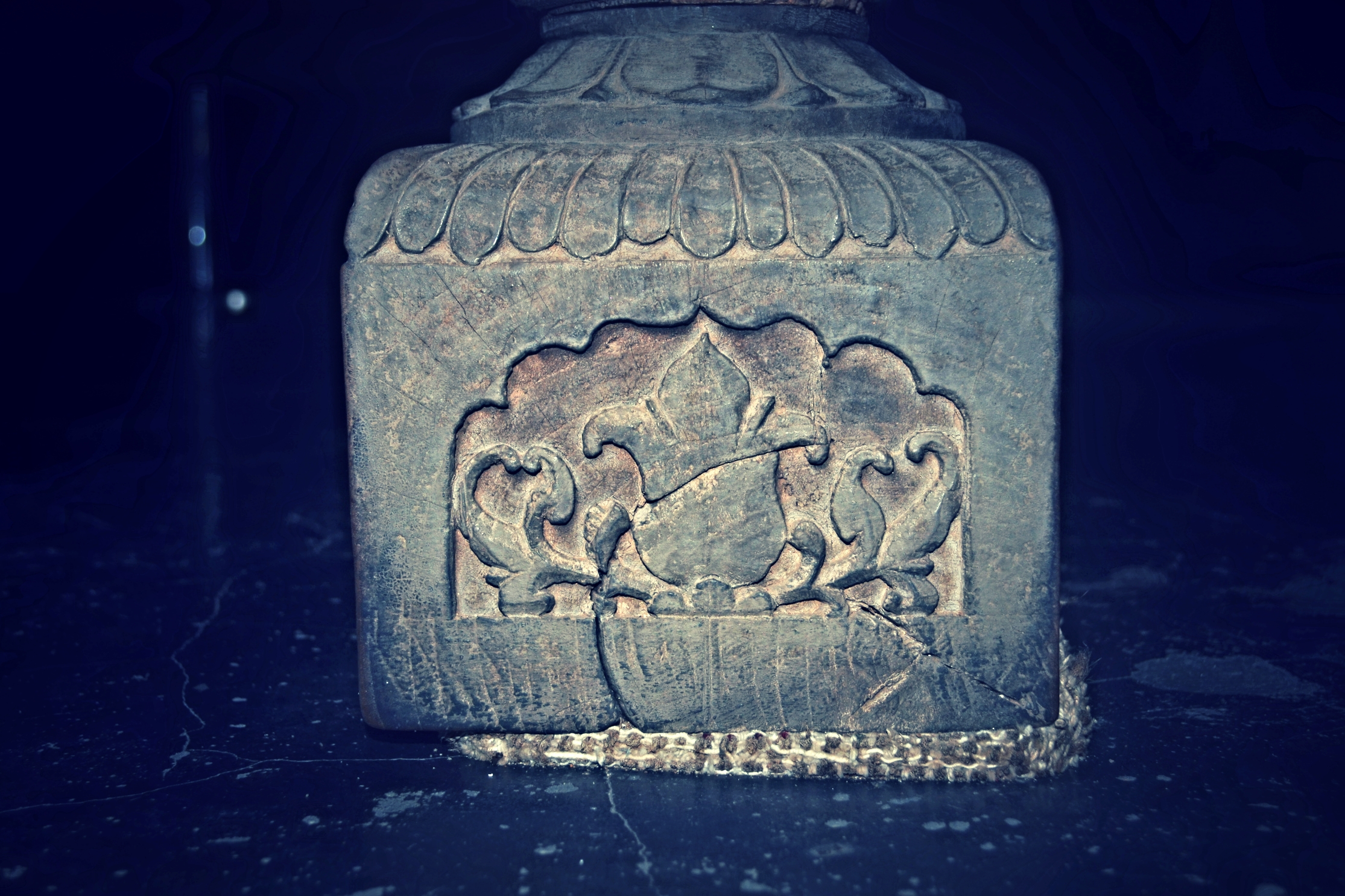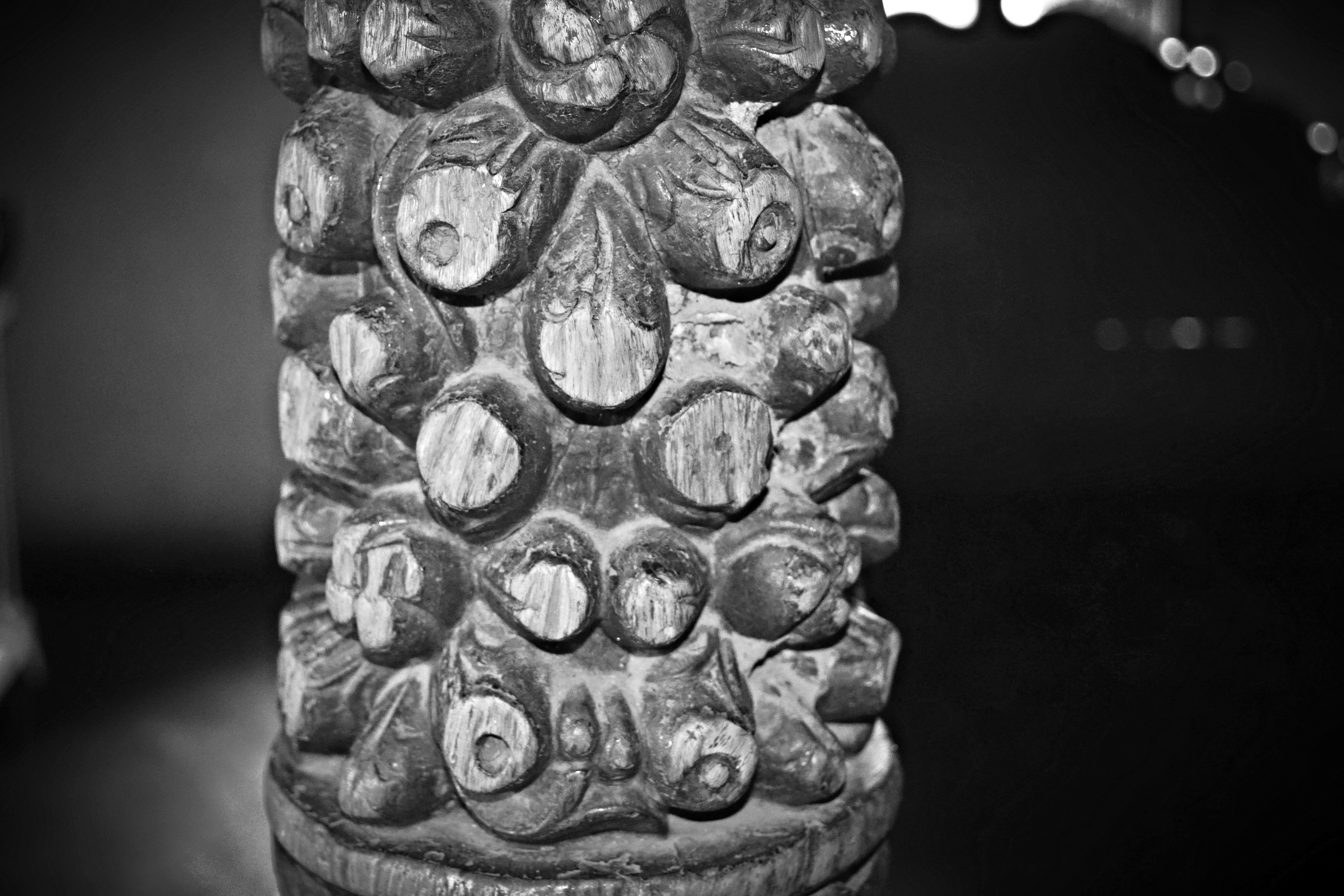Last year, I found a small cut-out from The Insurance Press, an insurance newspaper that described the ivory throne presented by Maharaja Uthram Thirunal Marthanda Varma of Travancore to Queen Victoria of England. The throne was seen by one of the newspaper reporters at the St. Louis Purchase Exposition in St. Louis, Missouri. My contact at the Royal Collection Trust (RCT), which manages the throne now, was as surprised as I was at this information for most of the records on the throne were lost in the fire at Windsor Castle.
Right: Cut-out from The Insurance Press vol.17, December 16, 1903, page 12, Publisher: F. Webster (From New York Public Library, Digitized by Google); Left: Ivory Throne, Windsor Castle, UK, copyright: Royal Collection Trust
The short paragraph in Insurance Press from December 1903 reads:
"Among the priceless treasures comprising the Jubilee presents of Queen Victoria, which have been sent to America by King Edward of England, for exhibition at the World's Fair, is a wonderful ivory chair and footstool. These were presented to the late queen by the Maharajah of Travancore. The carving on the chair and the footstool is a revelation of the possibilities of art. The feet are in the form of lions' paws, and the arms terminate in lions' heads. The back is in the form of a shell, supported by elephants, rampant. The seat is of alabaster, and the chair has a gold and silver tissue drapery around the underside of the frame, finished with tassels and richly chased ormolu ornaments. The cushions are of green velvet, embroidered in gold and silver thread. Every outside part of the chair is covered with delicately carved figures of men and animals."
There is no doubt from the description that the throne in question is the Travancore ivory throne, even though a few of the details are questionable and/or inaccurate. For example, the report claims the seat to be made of alabaster, but it is actually made of elephant teeth. (See a conservation video from RCT here for a closer look.) But other details such as the mention of tassels and tissues lining the underside of the throne is accurate, as seen in an 1851 salted paper print of the throne below (left).
Left: Ivory Throne and Footstool, 1851; RIght: Official Portrait of Queen Victoria as 'Empress of India' on Ivory Throne, 1876 (Images: Royal Collection Trust/© Her Majesty Queen Elizabeth II 2016)
While information about the throne's visit to the United States is scant, I found some more mentions of the throne in other publications. In the History of Louisiana Purchase Exposition (Bennitt et. al, 1905), the throne is listed among many other things in the collection that's referred to, again, as "Jubilee presents of Queen Victoria" sent by "the subject princes of her Indian Empire" (Bennitt et al., 1905: 268). The throne is described as the "elegantly carved ivory chair of state" (ibid.). The collection that authors mark as over 400 in number, is mentioned specially as one that stands out among all the displays from the British empire. The authors are keen to point out its popularity in general and particularly with the female viewers: "Four towering London "Bobbies," in the regulation police uniform, took turns in guarding these priceless relics of Queen Victoria's reign, and the throngs passing in and out of the room from the opening to the closing everyday showed that, in offering these exhibits, King Edward had not overestimated the interest American women would take in these testimonials to his venerated mother." (Bennitt et al., 1905: 269)
It is interesting to see what else was included in the large exhibition that in the official press release was titled "The King's Contribution."
THE LOUISIANA PURCHASE EXPOSITION.PRESS, VOLUME LXI, ISSUE 11877, 26 APRIL 1904; http://paperspast.natlib.govt.nz/newspapers/CHP19040426.2.7
From Travancore, there were some other objects in the descriptive list provided here. These include:
"Two great pairs of tusks sent to the late Queen by the Maharajah of Travancore will prove of great interest. These tusks are probably the largest, ever seen. They bear this inscription : —• "Pair of elephant's tusk*, mounted on a buffalo's head carved in ebony, which is supported on four griffins." The tusks are supported higher up by a crossbar of ebony, the whole resting on the heads of four figures representing the incarnations of Vishnu."
Unattributed to Travancore, but another mention of elephant tusk objet d'art follows:
"A pair of elephant's tusks, mounted as flower vases on a stand of rosewood, covered with ivory, is another interesting exhibit. The tusks are mounted with gold, and are entwined by a pepper vine in fruit worked in gold. The vases are supported on two elephants' heads carved in ebony, and rising from out of a base of rock and jungle worked in ivory and elephants' teeth. The trunks of the elephants support a lotus of ivory on which is seated a golden image of Lukshine [Lakshmi], the Goddess of Prosperity."
A little later in the description, the ivory throne is mentioned:
"The Maharajah who sent the pair of tusks sent also a beautiful chair—a sort of Sedan chair of state that is literally covered with gold and diamonds. It has some wonderful ivory carving on- its legs and back and seat. The seat is of alabaster and is hung with gold and silver."
The press release as well as eye-witness accounts of the throne had a large circulation as seen in the appearance of these descriptions in smaller local newspapers like the Kentucky weekly Mt. Sterling Advocate, that posted a small article seen in the image below (Digression: the newspaper's tagline reads, "EDITORIALLY Strictly Democratic; cannot be sidetracked, opposes all class and vicious legislation.") After a description of the throne as seen in the press release above, and with an added accolade cited from Scientific American: "a revelations in the possibilities of art," the articles goes on to describe other items made of elephant tusks. But here, for perhaps, an added dramatic measure, the author remarks: "The maharajah, not satisfied with these truly princely gift, presented also to her majesty two immense pairs of elephants' tusks..." (For more information, see: http://kdl.kyvl.org/catalog/xt7tx921dn3k_8/viewer)
Clearly, the throne and other objets d'art in this discussion is representative of the era of high imperialism, and a definite romanticization of the assorted east in North America, at the time. The association of the throne to the Queen as well as its position as a "gift" from a "subject prince" of India is duly mentioned in all the chronicles, suggesting that the throne remained in popular conception, a political conduit of imperial relationships. More on this can be read in my paper on the role of the ivory throne as political negotiator in British-Travancore relations; abstract can be read here.)
It is also interesting to note here that the throne, contrary to all the descriptions of it provided here, was not a Jubilee gift to the Queen, which happened in 1887 and, then in 1897. The throne was presented to the Queen about 35 years earlier in 1851 at the occasion of the Great Exhibition of Industry of All Nations at the Crystal Palace in Hyde Park, London. The throne was sent as an exhibit-object at the Great Exhibition, following which, Maharaja Uthram Thirunal of Travancore had insisted in the accompanying letter, the Queen accept it as a royal gift. (For more on the topic, you can read a rather long excerpt of my paper on the production of Queen Victoria's ivory throne here.)
In 1851, far from being a subject prince, Travancore considered itself a kingdom autonomous from British-controlled India, and the Maharaja makes that distinction clear in the letter he writes to the Queen, describing Travancore as the small state "neighboring" Her Majesty's empire. We also know from contemporaneous accounts that the throne was initially designed for the Maharaja, and later re-assigned as a gift for the Queen. An erasure of the throne's production history can be seen at play here.
In any case, these various mentions serves to demonstrate the immediate visibility of the ivory throne amongst hundreds of exhibits from the imperial collection, and the alluring quality of the ivory carvings, that find repeated mention in all accounts.
Parting note: It remains to be studied why the ivory throne from Travancore was chosen as Queen Victoria's chair of state in 1877 when she took the title of 'Empress of India.'
Note: All images used in this post, except for those taken by the author with the permission of Royal Collection Trust, belong to the Royal Collection Trust. Photographs by author have been taken after receiving permission from Royal Collection Trust, UK. All rights reserved.
References:
Bennitt, Mark, and Frank Parker Stockbridge. 1905. History of the Louisiana Purchase Exposition: comprising the history of the Louisiana territory, the story of the Louisiana Purchase and a full account of the great exposition, embracing the participation of the states and nations of the world, and other events of the St. Louis World's Fair of 1904. Saint Louis: Universal Exposition Pub. Co.
The Insurance Press. 1905. New York: [F. Webster]. http://books.google.com/books?id=tIRQAAAAYAAJ.









